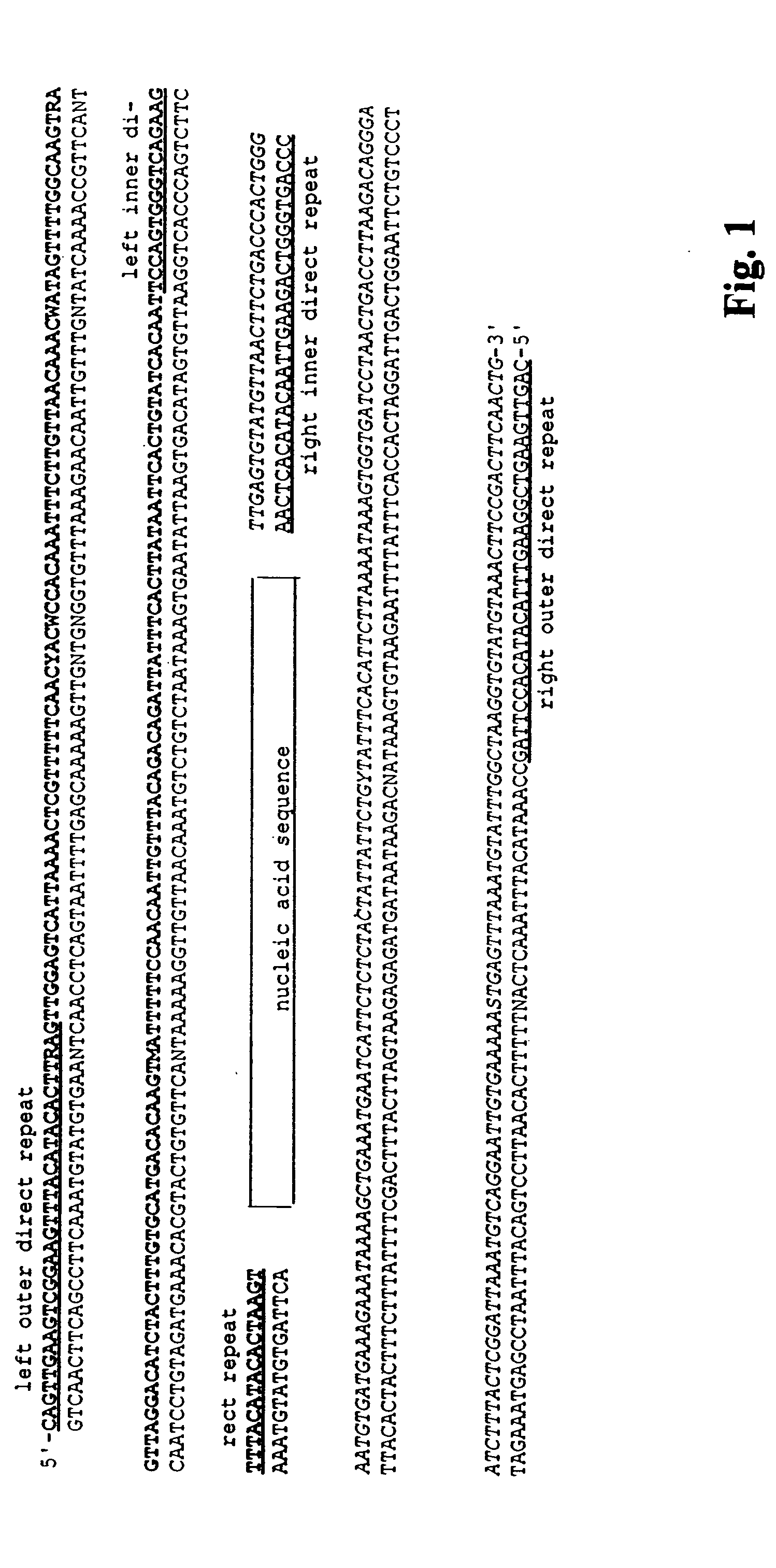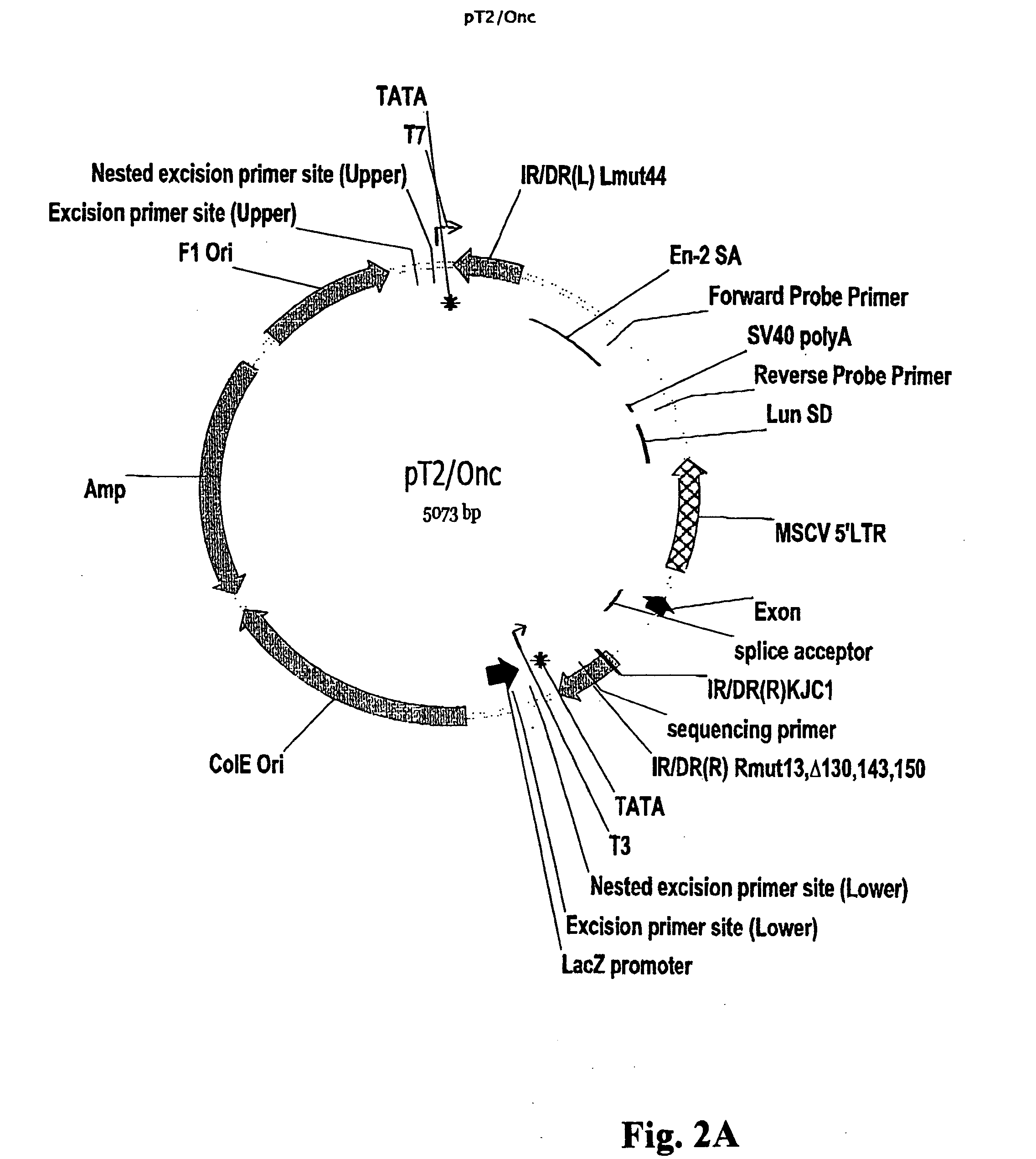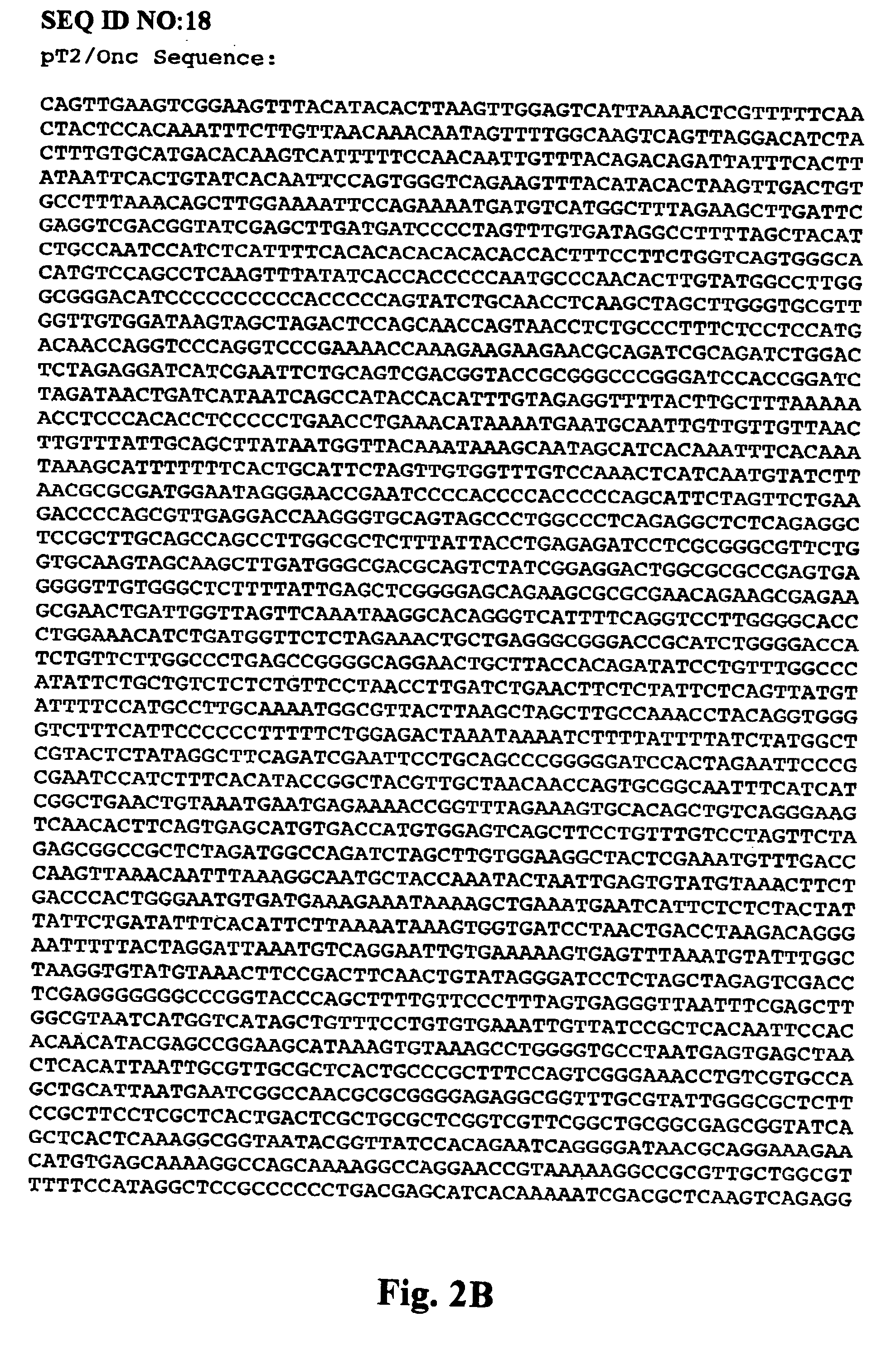Methods and compositions for identification of genomic sequences
- Summary
- Abstract
- Description
- Claims
- Application Information
AI Technical Summary
Benefits of technology
Problems solved by technology
Method used
Image
Examples
example 1
Cancer Gene Discovery in Solid Tumors Using the CAGGS-SB10 Transposase and the T2 / Onc Transposon in Tumor-Prone Mice
[0143] An SB transposon, called T2 / Onc, was engineered to induce both loss- and gain-of-function mutations (FIG. 10A). T2 / Onc contains splice acceptors followed by polyadenylation signals in both orientations to intercept upstream splice donors upon intronic insertion and generate loss-of function mutations. Between the two splice acceptors are sequences from the 5′LTR of the murine stem cell virus (MSCV), which contain strong promoter and enhancer elements that have been shown to be active in stem cells (Abdallah et al., Hum Gene Ther., 1996; 7:1947-54; Hawley et al., Gene Ther., 1994; 1:136-8; Cherry et al., Mol. Cell Biol., 2000; 20:7419-26). Immediately downstream of the LTR is a splice donor for splicing of a transcript initiated from the LTR into downstream exons of endogenous genes. Two lines (#68 and #76) of T2 / Onc transgenic mice were used for analysis (see E...
example 2
Mammalian Mutagenesis Using the Rosa26-SB11 Transposase and the pT2 / Onc2 Transposon
Creating a Highly Active SB Mutagenesis System
[0163] To develop a more active eukaryotic SB transposition system, a number of enhancements were made to the SB transposition system used previously. For example, a mutagenic transposon vector, T2 / Onc2 was generated (FIG. 13A). This transposon is similar to that described by in Example 1, but contains a larger fragment of the engrailed-2 (En2) splice acceptor (SA) and is flanked by optimized SB transposase binding sites that increase SB transposition (Cui et al., J. Mol. Biol., 2002; 318:1221-1235). It is also smaller than other SB transposons used previously (˜2.0 kb) and approaches optimal size for transposition (Geurts et al., Mol. Ther., 2003; 8:108-117). T2 / Onc2 contains two splice acceptors and a bi-directional polyA (pA) and can terminate transcription when integrated in either orientation in a gene. It also contains a murine stem cell virus (MS...
example 3
Transposition Assay
[0186] An assay may be used to measure the level of excision and reintegration (transposition) provided by a transposition system. Preferably, the assay for measuring transposition uses a mammalian cell line, preferably HeLa cells. The cells can be cultured using routine methods, preferably by culturing in DMEM supplemented with about 10% fetal bovine serum (for instance, characterized fetal bovine serum, available from Hyclone, Logan, Utah), about 2 mM L-glutamine, and antibiotics (for instance, antimycotic, available from Gibco-BRL, Carlsbad, Calif.). Typically, the cells are seeded at a density of about 3×105 cells per 6-cm plate one day prior to transfection. The cells are transfected with from about 450 ng to about 550 ng, preferably about 500 ng vector containing the transposon, and from about 450 ng to about 550 ng, preferably 500 ng of vector encoding the SB transposase. Preferably, the vector pCMV-SB (SEQ ID NO:8) is used as the source of SB transposase ...
PUM
| Property | Measurement | Unit |
|---|---|---|
| Fraction | aaaaa | aaaaa |
| Fraction | aaaaa | aaaaa |
| Fraction | aaaaa | aaaaa |
Abstract
Description
Claims
Application Information
 Login to View More
Login to View More - R&D
- Intellectual Property
- Life Sciences
- Materials
- Tech Scout
- Unparalleled Data Quality
- Higher Quality Content
- 60% Fewer Hallucinations
Browse by: Latest US Patents, China's latest patents, Technical Efficacy Thesaurus, Application Domain, Technology Topic, Popular Technical Reports.
© 2025 PatSnap. All rights reserved.Legal|Privacy policy|Modern Slavery Act Transparency Statement|Sitemap|About US| Contact US: help@patsnap.com



